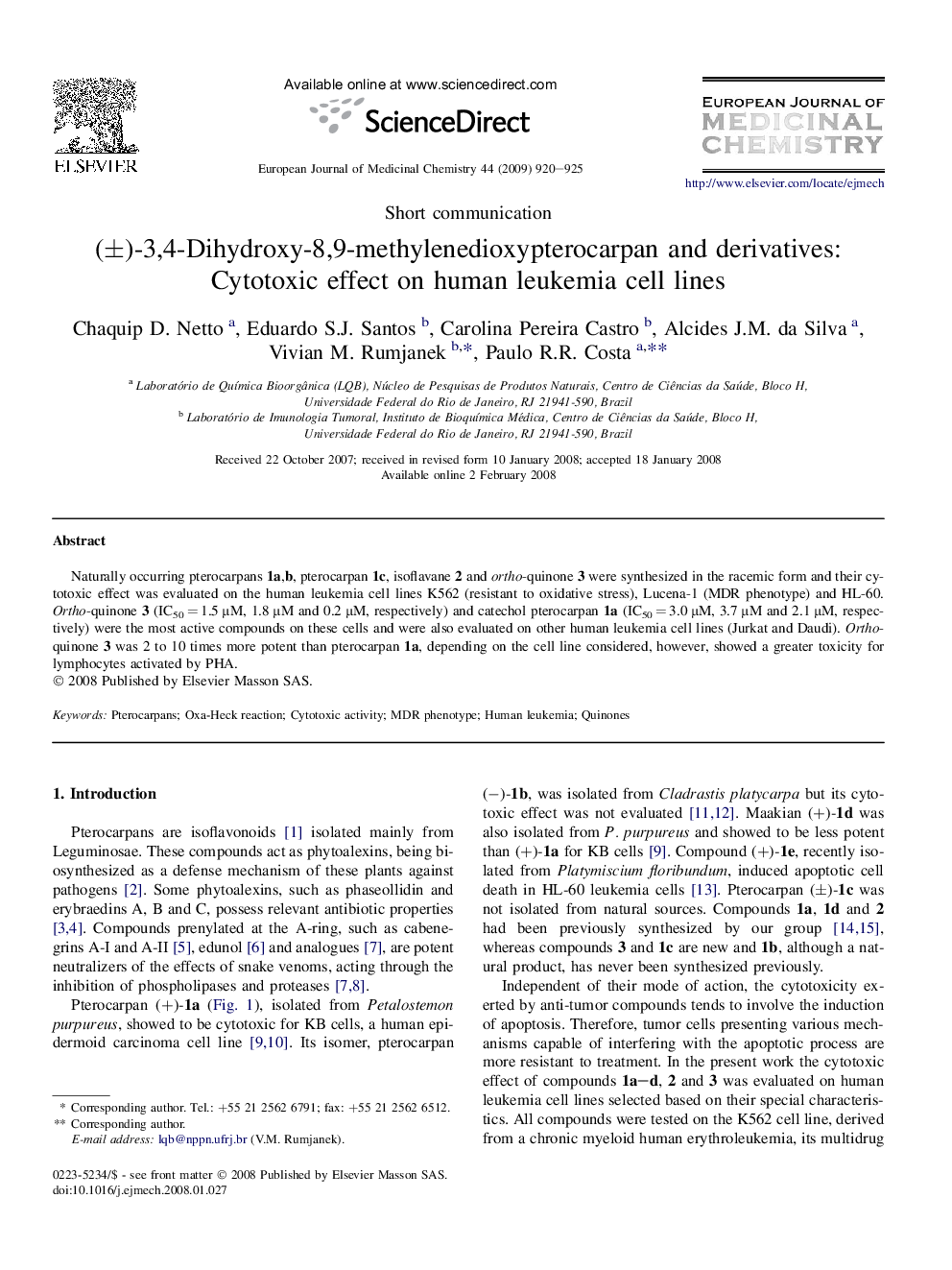| Article ID | Journal | Published Year | Pages | File Type |
|---|---|---|---|---|
| 1395344 | European Journal of Medicinal Chemistry | 2009 | 6 Pages |
Naturally occurring pterocarpans 1a,b, pterocarpan 1c, isoflavane 2 and ortho-quinone 3 were synthesized in the racemic form and their cytotoxic effect was evaluated on the human leukemia cell lines K562 (resistant to oxidative stress), Lucena-1 (MDR phenotype) and HL-60. Ortho-quinone 3 (IC50 = 1.5 μM, 1.8 μM and 0.2 μM, respectively) and catechol pterocarpan 1a (IC50 = 3.0 μM, 3.7 μM and 2.1 μM, respectively) were the most active compounds on these cells and were also evaluated on other human leukemia cell lines (Jurkat and Daudi). Ortho-quinone 3 was 2 to 10 times more potent than pterocarpan 1a, depending on the cell line considered, however, showed a greater toxicity for lymphocytes activated by PHA.
Graphical abstractNaturally occurring pterocarpans 1a,b, pterocarpan 1c, isoflavane 2 and ortho-pterocarpanquinone 3 were synthesized in the racemic form and their cytotoxic effect was evaluated on the human leukemia cell lines K562 (resistant to oxidative stress) and Lucena-1 (MDR phenotype).Figure optionsDownload full-size imageDownload as PowerPoint slide
